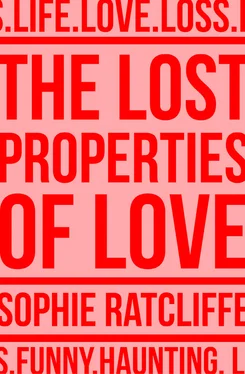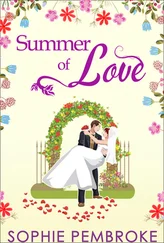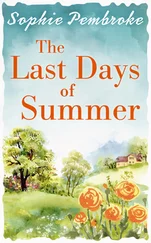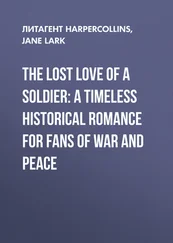Today, the Circle Line still isn’t a real circle – invaded at all angles by the District and Metropolitan, kinked at Edgware Road. One wrong move at Earl’s Court and it can still send you round in an unwitting loop, circling back to where you began. Nowadays, the trains are sleek silver beasts, joined with grey rubber concertinas, which bend and flex with the tessellated sheets of metal as if they are alive, breathing with the train’s movement, like a big anemone. But some things are the same. At Sloane Square, a man in a red beanie hat will play the tune from The South Bank Show on his violin, then hold out a paper cup for donations – the look in his eyes not perhaps that different to those of the many hungry men, women and children who have made their way across the pavements of Praed Street over the years, players in the station game. The District and Circle commuter sways to the rhythm of the metal heartbeat, wearing his suit and anorak, just as his great-great-grandfather would have stood, carried through the same tunnels, twenty-five feet of cut and cover under the surface of London.
It is cleaner now, of course. Dirt was everywhere when Kate Field rode the Underground. The air was full of the sound of carriage doors slamming shut, draughts of air coming down the tunnels, and the acrid smoke that caught in the back of your throat and made you cough. The swaying gas-lit orbs would have given everything a smoky, ochre tone. George Gissing wrote of the black fumes , the shrill whistles , the walls of adverts that clamoured to the eye: theatres, journals, soaps, medicines, concerts, furniture, wines, prayer-meetings . Field would have looked out over the sea of workmen’s caps and tall top hats and thin umbrellas and greenish newspapers folded in a hurry. She would have covered her mouth, and made for the Moorgate Street exit.
London had made Field sick before. She was laid low one winter for three weeks with bronchitis, but this time she was better insulated, taking rooms in New Cavendish Street on the corner near Wimpole Street, which she decorated with newspapers and photographs. She needed her voice more than ever. She was in charge of promoting the eighth wonder of the world, the first public relations manager for Alexander Graham Bell’s new invention, the telephone.
Field believed in the telephone. Love at first sight. She writes of the excitement of approaching the small pear-shaped wooden instrument , which sat on a desk, looking for all the world like a misplaced stethoscope. And then her surprise when she picked it up – hearing a voice. A speaking object. Intimacy at a distance. Soon, she said, every house will be connected . Everyone wanted to see this invention, and Field was its natural promoter. She conjured an air of mystique around the new, otherworldly piece of tech. Invitations were issued to select VIP salon events, or telephone séances. This was the age of spiritualism, an age of table rapping and mesmerism, and the papers loved it. There were special guests, and celebrity visits. Prince Louis Napoleon turned up with the Duchess of Westminster and a large party of swells . George Eliot got her own private audience with the device, and a special telephone concert was fixed for Queen Victoria. Ahead of her time, Field pitched a Skype prototype as the next step.
All through the winter and spring of 1878, invited guests gathered in the Cannon Street offices. Bell took centre stage, placing the sacred instrument on a wooden platform. MPs and aristocrats chatted, lunched and talked politics, while they viewed and heard their voices make their way down the wires. The whole thing must have taken the edge off the melancholy weather and rising tensions in Constantinople. Field took notes, made introductions, hustled. Hidden in the guest list, somewhere between the actress Lillie Langtry and the publisher John Blackwood, was her friend Anthony Trollope.
When I was growing up, every phone call was a small journey. I would emerge from my bedroom at the back of the house, along the landing and past the airing cupboard, running my hand along the Anaglypta wallpaper, round and down the stairs to the front hall, where the beige plastic phone sat on the window-ledge, beside the address book and a pot of pens. Looking out of the window, you’d see the silver birch, then Mavis Pace’s house opposite, with the white glass-panelled front door lined with net that felt like silk.
Our phone had a transparent dial – a circle, divided in half, with a piece of paper in the centre bearing the number and code, and made of two bits of plastic, with a grooved line in between to collect grit. Even the act of using the phone was a journey in miniature. Every one of the seven digits involved the slow pulling back, and releasing, of the rotary dial. If your courage faltered, you could stop at any moment, and fiddle with the grit in the telephone case, or try to clear the white mist from the leadlighting with your thumbnail, until the final number was pulled back and the recoil spring took matters into its own hands. Then your only choice was to listen to the sound of ringing, or slam the receiver down before the other person answered.
Field and Trollope sat together in that sunny room in Cannon Street surrounded by the throng of guests. Was there something between them – a hint of smoke in the air? Perhaps they’d arrived together. Perhaps Trollope had written her one of his notes – If you like it I will take you. I will call for you at 3-pm in a hansom cab. Let me have a line to say so . Trollope was always waiting on a line from Field. We have the record of his invitations. The letters. The implications. If you are going out of town, let me know when you go. If you’ll go down close to the sea, & near enough for me to get at you, I would then go to you. He sends her a kiss that is as loving as you please . In another, he talks of something darker – the black phantom that lies between them, that vexes her, and teases his wife. In one short story he tells of a sleigh ride with a woman who sounds uncannily like Field. They sit, side by side, all enveloped in buffalo furs , and he thinks how nice it would be to drive on and on, so that nobody should ever catch them. He felt he would have liked to cross the Rocky Mountains with her, over to the Pacific, and to have come home round by California, Peru, and the Pampas. Everywhere, moving.
Trollope asks her again, in a letter, to meet. He writes of her with love. She is a ray of light to him. She is someone from whom he can always strike a spark. He asks for her to come and see him. Field’s replies have vanished.
Perhaps there’s a pile of lost letters and telegrams out there. But that month, at least, I suspect she had little time for correspondence. Maybe she barely noticed Trollope was there at all. Or perhaps she invited him just so that he could watch her show off, flirting with Millais, the painter, or giving Lady Henniker the eye. It could have been a kind of revenge. The first time they had met, in Italy, when all eyes were on him, Field had sat in the corner feeling like a nobody, waiting to catch his attention. Now she was in the centre, holding court, one of the ‘taking’ things of the season . Either way, there would have been a moment when she passed the receiver to him. He could still feel the warmth of her hand on the wood.
How long can two people be apart from one another – how many impossibilities between them – before the connection goes dead?
The journey to an affair is like the longest dialling process in the world. Most of the time we never go further than rifling through our mental address book, looking at names and checking their Twitter feed, wondering what they might be up to. Thinking about who and what might happen if you ever called, and if they would choose to pick up. Perhaps they are already on another line.
Читать дальше












